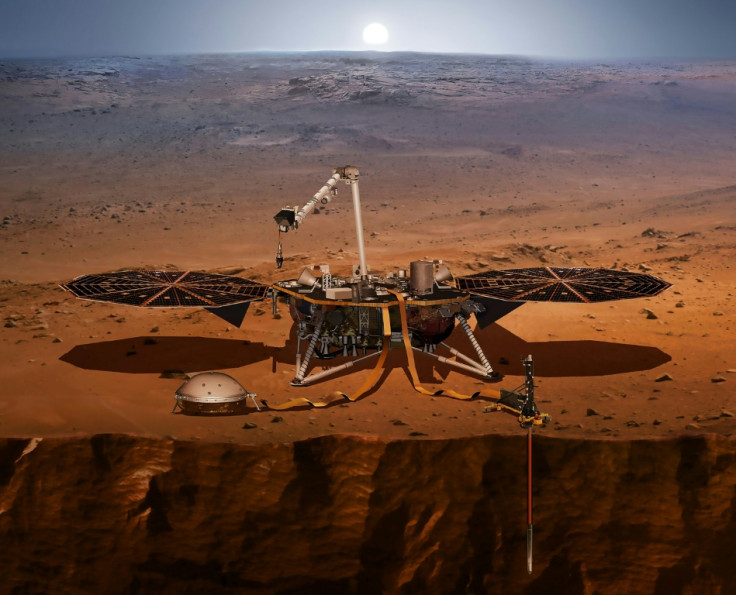NASA's InSight reveals Mars is 'seismically active planet': Findings
InSight's findings from the first 10 months on Mars reveals multiple quakes or Marsquakes and similarities in Mars and Earth's weather conditions.
Almost after a year of exploring deep interiors of the planet Mars, NASA's InSight has sent back its first findings of the Martian surface and it is really interesting. The planet, which is believed to be too cold and dormant, may not be so. It is revealed that Mars is a "seismically active planet."
The Interior Exploration using Seismic Investigations, Geodesy and Heat Transport or InSight was the latest robotic lander on Mars. Managed by NASA's Jet Propulsion Laboratory, it was launched on May 5, 2018 and it landed on Elysium Planitia, a broad plain on the planet, on November 26, 2018.
The initial results of the mission were recently received and published on Monday in the journals Nature Geoscience and Nature Communications. It was revealed that the lander was able to detect multiple quakes, that are termed as Marsquakes. Citing the findings, Independent reports that InSight was able to detect more than 450 tremors. Equipped with a seismometer, the lander was able to detect tremors that were much smaller than anything that would be felt on Earth from hundreds and thousands of miles away.
However, two of the shocks are said to be significantly big enough for scientists to be able to identify their origin. It is said that these tremors hailed from the geologically active area known as Cerberus Fossae, around 1,000 miles east of Elysium Planitia. According to Science Daily, the largest Marsquake was measured up to the magnitude 4.0 in size. The first-ever Marsquake that was recorded by the sensors of InSight was in April 2019.
"We've finally, for the first time, established that Mars is a seismically active planet," InSight principal investigator Bruce Banerdt, of NASA's Jet Propulsion Laboratory (JPL) in Pasadena, California, said during a teleconference with reporters on Thursday.
"In fact, it's probably close to the kind of seismic activity you would expect to find away from the [tectonic] plate boundaries on Earth and away from highly deformed areas," he added.
In addition, the exploration project was able to figure magnetic signals. It is believed that billions of year ago, Mars had a huge magnetic field which does not exist anymore. However, traces of it can still be found in the form of magnetised ancient rocks. InSight's magnetometer was able to discover signals that are 10 times stronger than what was predicted at Homestead Hollow.
As for the weather, the scientists found similarities in Mars and Earth's weather conditions, however, there are significant differences, too. It is discovered that Mars hosts stronger daily atmospheric pressure and huge temperature fluctuations. The atmosphere is described to be "so thin that it can heat up and cool down much faster than Earth's."

"At night, it cools to as low as about -95C, while in the daytime, it reaches temperatures near 0C," said Dr Don Banfield, of the Centre for Astrophysics and Planetary Science at Cornell University in the US and a lead author on one of the studies.
Apart from all this, the mission detected evidence of devil dust and a phenomenon known as "gravity waves."
© Copyright IBTimes 2025. All rights reserved.





















